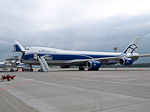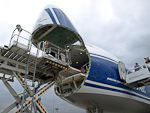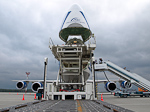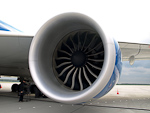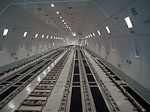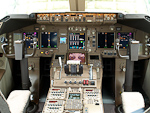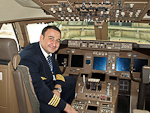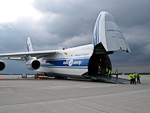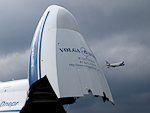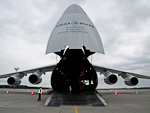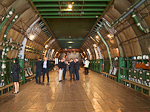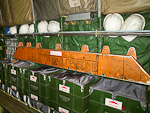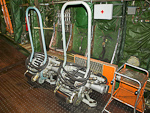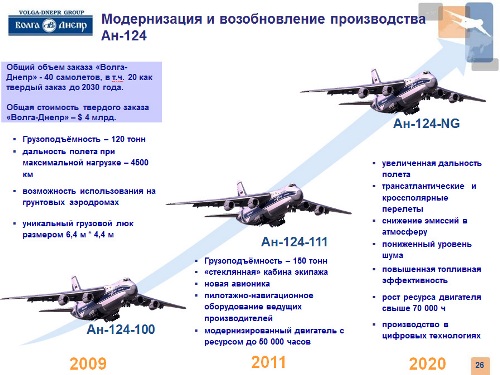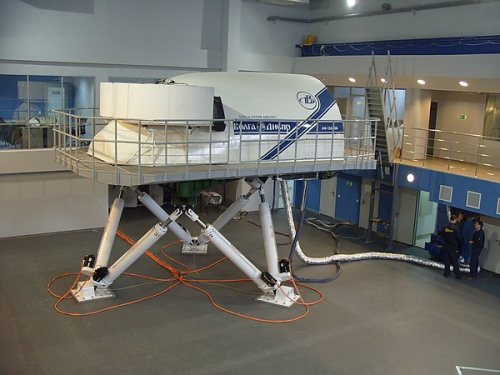Boeing 747-8F and An-124-100 at Domodedovo
TIACA is a non-profit association that brings together participants in the international air cargo market. The association was created to promote the liberalization of the global market and the development of trade relations between countries. TIACA members include representatives of all major segments of the air cargo and logistics industry, including such well-known airlines as: Air Canada, Emirates, Swiss International Japan Airlines, United Airlines, Virgin Atlantic, Volga-Dnepr, UPS Airlines, DHL Express, Fedex Express; airports Amsterdam Airport Schiphol, Aeroports de Paris, Beijing Capital Airport, Los Angeles World Airports, Domodedovo Airport and others.
During a press briefing, Deputy Minister of Transport Valery Okulov noted that the “concept for the development of air cargo transportation in the Russian Federation” is aimed at realizing the country’s transit potential and developing domestic demand for air cargo transportation by increasing the competitiveness of air transport services in the Russian Federation.” For his part, Alexei Isaikin, President of the Volga Dnepr Group of Companies, emphasized that the knowledge and experience accumulated by the members of the association “are necessary for us in order to fully and efficiently realize the huge potential of the aviation industry that we possess.”
The interest of Western companies in the Russian market was indicated by Michael Steen, Chairman of the International Cargo Aviation Association TIACA: “The Russian economy is developing steadily, as evidenced by the country's recent accession to the WTO. The role of Russia in international logistics is rapidly growing, making this region more and more attractive both for investments directly in Russian business and for global transport companies and freight forwarders who consider Russia as a convenient logistics hub.”
The situation in Russia is paradoxical - there is someone to transport cargo and someone to consolidate it, large large airports create infrastructure for receiving and processing cargo, but the Russian economy is not yet ready to form stable cargo flows sufficient to fill large transport aircraft. And, unlike the passenger transportation market, the arrival of foreign companies in the cargo sector is not at all scary. There are large, successful and financially stable cargo carriers in Russia. Our leader in this segment is Volga-Dnepr Group of Companies.
The Volga-Dnepr Group of Companies is included in the TOP 15 global cargo airlines and is the world leader in the segment of transportation of extra-heavy and oversized cargo. In just 8 years, the Group's sales increased 6 times and in 2011 reached $1.75 billion. The Group provides jobs for 3,270 people.
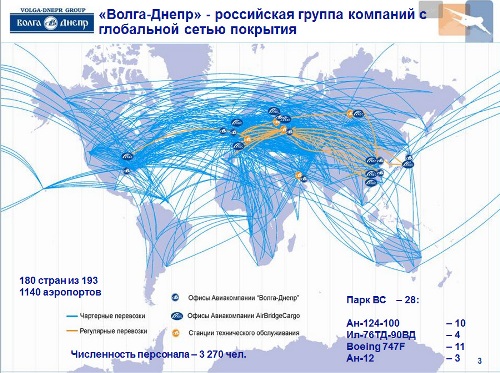
Charter cargo transportation within the Group is carried out by Volga-Dnepr Airlines. Its fleet consists of 10 An-124-100 Ruslan and 5 Il-76TD-90VD super-heavy aircraft, which comply with all modern and future ICAO requirements and fly around the world without restrictions. Six years of experience in operating the Il-76TD-90VD aircraft has proved its demand in the market, which is growing year by year. Regular cargo transportation within the Group is carried out by AirBridgeCargo. It currently has 12 Boeing 747 family aircraft in its fleet, including 2 of the latest Boeing 747-8Fs. Also, in 2011, the Group acquired the Atran airline, which has 3 An-12s in its fleet.
The organizers of the summit left the most interesting “for a snack”: a demonstration (Russian premiere) of the latest Boeing 747-8 Freighter, the legendary Soviet heavyweight An-124-100 Ruslan and a modern modification of the Il-76TD-90VD military transport aircraft took place at Domodedovo Airport
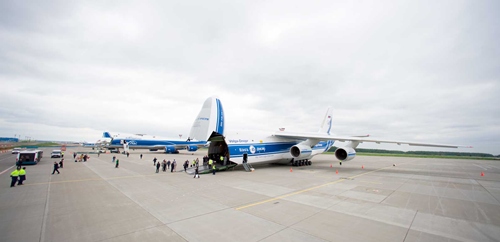
AirBridgeCargo Airlines, a member of the Volga-Dnepr Group, became one of the first companies in the world to receive Boeing 747-8 Freighter aircraft into operation. Now the company has 2 such aircraft and the third should arrive by the end of the year. Interesting fact: AirBridgeCargo is the largest cargo carrier at Frankfurt Airport (and the airport itself is the largest European hub).
The Boeing 747-8 Freighter is a new modification of the Boeing 747 aircraft. It features excellent flight performance, as well as a 16% increase in the volume of cargo compartments compared to the B747-400F modification, improved fuel efficiency and noise reduction, which together will allow the airline optimize operating costs and increase economic efficiency.
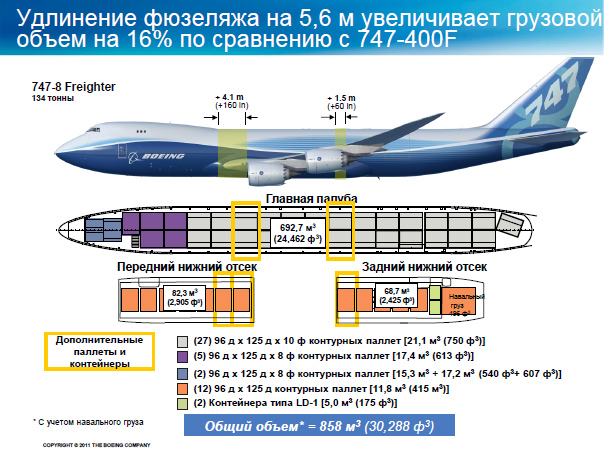
Maximum load capacity Boeing 747-8 Freighter - 133.9 metric tons (133,900 kg) or 147.6 tons (295,200 lb)
Range with maximum payload: 4,390 nautical miles (8,130 km)
Maximumrange: 8,000 nautical miles (14,815 km)
Height: 63 ft 6 in (19.4 m)
Wingspan: 224 ft 7 in (68.4 m)
Length: 250 ft 2 in (76.3 m)
Cruising speed: Mach 0.85
Maximum takeoff weight: 975,000 pounds (442,250 kg)
Engines: General Electric GEnx-2B67 (66,500 lb thrust)
|
|
|
|
|
|
|
|
|
|
Here are some interesting facts about the Boeing 747-8 Freighter:
- The 747-8 Freighter's main and lower cargo decks can hold approximately 19 million table tennis balls.
- The 747-8 Freighter has the capacity to carry up to 10,767 gold bars from Fort Knox (that's roughly $7 billion worth)
- The electricity generated by the 747-8 can power 480,000 32-inch flat-screen TVs (that's the number of TVs in a city of over a million people)
- 747-8 Freighter can quickly deliver about 9 million 72-hour medical kits or 122,000 army ready meals to a disaster area
- 747-8 covers a distance equal to 3 FIFA football fields in 1 second
- 747-8 covers a standard marathon distance of 42.195 km in 2.5 minutes
- The top of the 747-8's tail is 63 feet 6 inches (19.5 m), which is the height of a six-story building
- 747-8 is the longest civil aircraft (76.3 m)
- One wing of 747-8 corresponds to the total area of four houses with three bedrooms and two bathrooms (each 1,375 square feet)
- The wingspan of a 747-8 is equal to the length of two 737-700s
- The diameter of the fan of the GENx-2B 747-8 engine is almost equal to the diameter of the fuselage of the B-29 bomber
- The takeoff thrust of a single 747-8 GENx-2B engine is approximately equal to the takeoff thrust of all (8) engines of the very first model B-52 bomber, the PWYJ57-3 installed on 747-8)
- The 747-8's fuel tanks hold over 64,000 gallons (242,266 L) of fuel, enabling very long distance flights such as from Los Angeles to Melbourne, Australia.
Against the backdrop of a large but elegant Boeing, somewhat reminiscent of a polished dandy city dweller, Ruslan looks like a big rural, recently demobilized bumpkin, who has only put aside household chores for a short time. Both the cockpit and the crew compartment have to climb long ladders hanging from the ceiling somewhere. But in it I felt something very dear and familiar for a long time. It is very ascetic and unpretentious, without unnecessary external effects. On the contrary, everything is maximally optimized to fulfill the main task - the transportation of oversized cargo. And in this he has no equal. Especially when you see how this giant opens its huge “mouth”, crouches down and some kind of road train, crane or military equipment leaves it under its own power. A stunning and unique aircraft, which can only be spoken of with admiration.
|
|
|
|
|
|
|
|
|
|
|
|
On the day of the summit, there was another good news: Volga-Dnepr Airlines put into operation a full-flight simulator (FFS) An-124-100. Volga-Dnepr has received permission from the Federal Air Transport Agency to use the FFS An-124-100 for the training and training of An-124-100 aircraft crews. “The simulator developer - Research and Production Company Complex Simulator Systems” (“NPF SKT”) completed the final work by equipping the flight simulator with a six-degree electric mobility system manufactured by Bosch-Reхroth (Netherlands).
The simulator was created jointly with the manufacturer Ruslanov - CJSC Aviastar-SP. FFS An-124-100 in terms of the composition and number of simulated systems is the most complex and voluminous simulator building project in the Russian Federation at present. |

